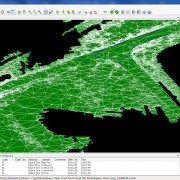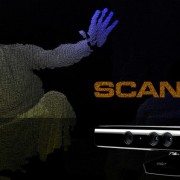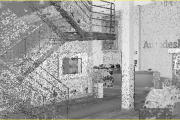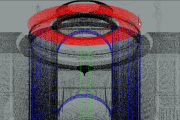Tag Archive for: Point Cloud
Here are all the nominees for the 23rd Annual VES Awards
/0 Comments/in Blog, Featured, LiDAR, Mobile Scanning, Modeling, Photogrammetry, Uncategorized, Visual Effects (VFX)/by Ty TaylorSCANable Strengthens Existing West Coast Presence
/0 Comments/in Blog, Featured, LiDAR, Mobile Scanning, Modeling, Photogrammetry, Uncategorized, Visual Effects (VFX)/by Ty TaylorLFM Server 4.2 – Introducing Key New Features
/0 Comments/in Point Cloud, Software/by Travis ReinkeAs 3D laser scanning has become easier and more affordable it has become the technology of choice for ‘as-is’ data capture. LFM Server™ enables users to maximize the value of the rich information that laser scanning generates.
LFM Server is the most advanced solution available for accessing pre-registered laser scan data and working with it directly in 3D CAD systems. It is simple to use and offers unrivalled performance and functionality.
There are many different 3D laser scanners and 3D CAD systems in use today. LFM Server has been developed to provide users with maximum freedom of choice of both scanning and design systems. It can read unstructured data from various scanner types; not only terrestrial laser scanners but also hand-held, mobile or aerial scanners.
Designed to work with data from even the highest-resolution scanner, LFM Server enables users to work with datasets of unlimited size and exploit photorealistic, 360° BubbleViews™.
Business Benefits
Open on the input
LFM Server can read a wide variety of 3D data capture formats- Open on the output
LFM Server interfaces seamlessly with all leading 3D CAD systems - Unlimited Datasets
InfiniteCore™ technology enables project datasets of unlimited size to be readily created and accessed - Increased Productivity
The intuitive 360° BubbleView makes it easy to verify clashes, review laser scan data, or simply become familiar with the site - Clash-free Design
Accurate, detailed ‘as-is’ information minimizes the business risks of revamp projects - Business Flexibility
Import scans from a wide variety of scanner types and data formats into a single dataset
For more information about LFM Server 4.2’s great new features, contact us or read more here.
Leica Cyclone II Topo 2.0 Early Look at New Find Terrain Feature
/0 Comments/in Point Cloud/by Travis ReinkeDavid Langley, Applications Engineer at Leica Geosystems, was kind enough to share a video tutorial of a useful new feature coming in the next release of Cyclone II Topo – version 2.0. In the video below, David demonstrates the software’s ability to easily filter through terrestrial laser scan data to locate and isolate the ground surface. This feature looks to be a great survey industry solution for creating a DTM/TIN from point cloud data by automatically thinning the hardtop surfaces while keeping breaklines and changes in elevation very dense. Using LandXML to transfer the resulting surface to Autodesk Civil3D, the boundaries can also be retained for better control over the final surface.
Leica Geosystems expects to release Cyclone II Topo 2.0 by mid-January 2011. We will be sure to give it a thorough review once we get our hands on it. Watch David’s tutorial below:
Thanks, David for taking the time to create this video and for sharing it with us!
Pointools introduces Point Cloud plug-in for Google SketchUp
/0 Comments/in Modeling, Point Cloud/by Travis ReinkeSource: Pointools Blog:

Like the Pointools Plug-ins for Rhino and AutoCAD applications, the Pointools plug-in for SketchUp eliminates the need for time-wasting translations, maintains visual quality and accuracy of point cloud models in SketchUp, and increases modeling productivity by reading the Pointools POD model file format to display billions of points on screen.

The Pointools Plug-in for SketchUp extends Pointools’ leadership as an enabler for reusing the largest point cloud models inside the broadest range of applications. Croser continued, “Through our Vortex platform and widely-used software plug-ins, thousands of Autodesk, Bentley, and Rhino users have been able to benefit from streamlined point cloud model reuse across different applications by eliminating time-wasting translations. Now, the Pointools Plug-in for SketchUp, enables the same users to increase their return on investment (ROI) from 3D laser scan data by also reusing the same point cloud models inside SketchUp.”
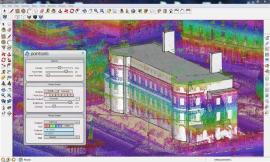
Microsoft Unknowingly Revolutionizes the 3D Imaging Industry [Kinect]
/0 Comments/in Featured, New Technology/by Travis Reinke

Drivers:
Kinect drivers for Windows can be found here.
Drivers for Mac and Linux can be found here.
The possibilities of this technology are tremendous. We see a near future where we can navigate through a point cloud dataset or virtual 3D model using simple hand gestures (see Evoluce’s example below). Imagine being able to digitally record “true” 3D video and having the ability to easily remove data at certain depths instead of by color eliminating typical green screen procedures. Even better, what if you strapped one of these bad boys onto a robotic vacuum and used it to remotely capture 3D data of interior spaces. Think we are crazy? Keep reading…
How does it work?
Wired has a great article about!
Examples:
We have compiled several of the best videos of the Kinect in-use. Check them out and be sure to post comments below. We all are masters of manipulating point cloud data, let’s pull together our resources and expertise and come up with some great applications for this affordable technology!
Evoluce, one of the leading manufacturers of high-quality multi-touch and gesture computing displays, demonstrates the future of how we interact with our computers.
MIT early experiments with a Microsoft Kinect depth camera on a mobile robot base. Say hello to KinectBot. Is this the indoor mobile mapping solution we have been waiting for?
Kinect-style device used to map the interior of a building:
For the launch of Xbox Kinect in Germany, seeper created an interactive projection mapping. Set at the highly visible Stachus in central Munich, this project attracted hoards of participants. Immersed in the experience, users took part in epic particle ball games, sending fluids shooting three stories high. Together with guests, including Sylvie van der Vaart, we explored the limits of controller free gaming!
Kinect used for real-time lightsaber:
What are your thoughts about this revolutionary device? Be sure to leave your comments and feedback below. Also be sure to check back here over the coming weeks for new updates!
Point Cloud Tools for 3D Studio [Project Helix]
/0 Comments/in Animation, Point Cloud, Software/by Travis ReinkeBring your visualizations into context with Project Helix, a powerful technology prototype enabling display and rendering of 3D laser scanning/LiDAR data sets with Autodesk® 3ds Max® and Autodesk® 3ds Max® Design software. With the 3ds Max Point Cloud Tools you can more quickly import as-built site references to help evaluate and visualize your designs in context of their surrounding elements. Point cloud data sets are often created by 3D scanners and represent set of measured vertices in a three-dimensional coordinate system. Using an automatic process, these devices measure in a large number of points on the surface of an object and output a point cloud as a data file. Download Now
The Point Cloud Tool for 3ds Max and 3ds Max Design allows you to:
- Import .PTS format point cloud data into 3ds Max or 3ds Max Design scenes (release 2010 & 2011)
- Display the point cloud data in the 3ds Max viewport with a variety of rendering options and levels of detail
- Render point clouds using the mental ray® renderer*
- Slice point clouds into pieces using geometric display volumes
- Export multiple clouds or parts of clouds to new .PTS files
* mental ray is a registered trademark of mental images GmbH licensed for use by Autodesk, Inc.
The Project Helix Technology Preview will be made available only for a limited time, so download Project Helix before June 20, 2011 and place your designs in context today!
If you would like to try the Point Cloud Tool for 3ds Max with a sample data set:
FEATURED VIDEOS
If you do not have access to YouTube videos, you can download the video from as 3ds Max Point Cloud Tools.mp4.
Point Cloud Shape Extraction for AutoCAD Plug-in
/0 Comments/in Point Cloud, Software/by Travis ReinkeSample Data
To experiment with Shape Extraction for AutoCAD, you can download some sample data. The zip file contains 5 samples: Cup.pcg, Football.pcg, Mandalay.pcg, Pipe.pcg, and Room.pcg.
Availability
To ensure the best experience for those participating, this technology preview is currently limited to: Australia, Canada, Ireland, New Zealand, Singapore, United Kingdom, and United States. We hope to expand to other geographies in the future.
The Shape Extraction for AutoCAD technology preview is licensed for a limited term and for a particular territory as referenced in the End User License Agreement. The technology preview will operate until February 1, 2011.
FEATURED VIDEOS
For those without YouTube access, the videos are available for download via this blog article.
Tiltan TLiD Transform LiDAR Point Clouds to 3D Models in One Keystroke
/0 Comments/in LiDAR, Point Cloud/by Travis ReinkeFrom Tiltan’s website: TLiD is Tiltan’s innovative solution for fast, automated creation of 3D maps and GIS information from LiDAR point clouds.
TLiD Main Features:
– Automatic extraction of DTM (bare earth) and DSM
– Automatic features extraction (houses, trees, power lines)
– Automatic full scene 3D reconstruction
– LAS or free ASCII txt input
– LAS, SHP, DTM and other output file formats
– Multiple input/output coordinate systems
– Integrated with a 3D Viewer
TLiD Advantages:
– Fast parallel processing for cost reduction
– No limitation on input file size
– Standalone product
– Special Applications
– Trees counting – height and size
– Power line mapping and clearance
– Line of sight
– Other applications – available on request
Tag Archive for: Point Cloud
Quick Pages
Recent Productions
Latest News
- A $1.5B Investment in Texas’ Film is Now LawJune 23, 2025 - 4:49 pm
- Daredevil: Born Again: the art and craft of critical VFX collaborationMay 3, 2025 - 1:58 pm
- Here are all the nominees for the 23rd Annual VES AwardsJanuary 15, 2025 - 6:58 pm




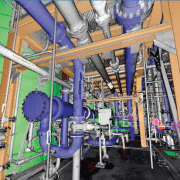
 Open on the input
Open on the input